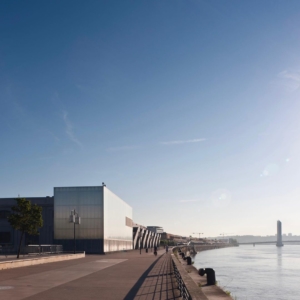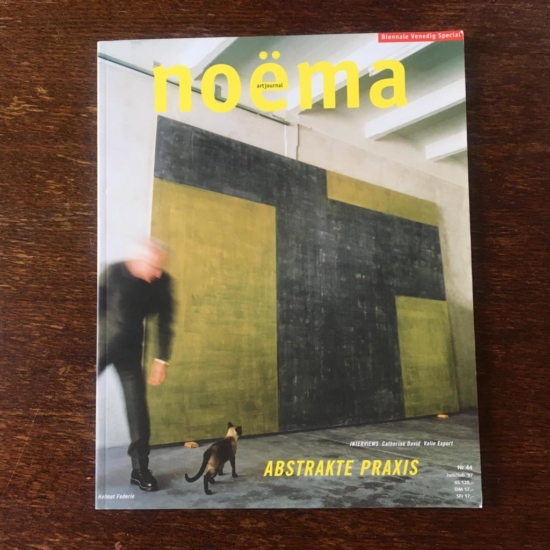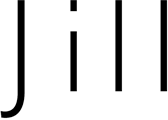
JILL SILVERMAN VAN COENEGRACHTS, FOUNDER JSVCprojects

UNAPOLOGETIC CONTENT.

BEHIND THE SCENES:
ESTHER SHALEV-GERZ,
KING & KING
A new sculpture
Installed in the United States

BEHIND THE SCENES:
SAVE THE DATE
BAD+
July 6-10 2022
HANGAR 14

BEHIND THE SCENES:
LINDA KARSHAN
Backstage filming ‘Two Feet Walking’
By Ishmael Annobil, Filmmaker
In response to the architecture of Murray Edwards College
Cambridge University
8th April 2022

A WALK IN MY LIBRARY:
HELMUT FEDERLE

BEHIND THE SCENES:
BENEDICTE DELAY WITH JASON BUTLER
‘ONE ON ONE’
Exhibition at ArtHouse Jersey
14 April – 2 May 2022

NATURE NOTES:
HELLO TO SPRING, PARIS

BEHIND THE SCENES:
A WALKED DRAWING, ‘TWO FEET WALKING’,
By Linda Karshan
In collaboration with Filmmaker, Ishmael Annobil
In response to the architecture of Murray Edwards College,
University of Cambridge

BEHIND THE SCENES:
ISHMAEL ANNOBIL, 'INSOMNIA'
Coming soon at L'Interstice, Arles
Opening on April 15, 2022

BEHIND THE SCENES:
JASON BUTLER, ‘ONE ON ONE’
Launch new ArtHouse exhibition space
Jersey, England

BEHIND THE SCENES:
ART & LANGUAGE, "THESE SCENES", 2016
Acquired by Centre Pompidou

BEHIND THE SCENES:
ESTHER SHALEV-GERZ
Bauhaus-Museum,
Weimar, Germany

BEHIND THE SCENES:
LOSING DAN GRAHAM
1942-2022

BEHIND THE SCENES:
THE DEVELOPMENT OF BAD+
BORDEAUX + ART + DESIGN
New dates: July 6-10 2022, at HANGAR 14

BEHIND THE SCENES:
2000 THANK YOU NOTES
7 February 2022

BEHIND THE SCENES:
NEW SPACE FOR JSVCPROJECTS

BEHIND THE SCENES:
ROBERT STONE
Debut with Haines Gallery at FOG Design + Art 2022
San Francisco, CA

BEHIND THE SCENES:
MISCHA KUBALL
nolde / kritik / documenta
A project by documenta archiv, Draiflessen Collection and Mischa Kuball
NEW DATE: FALL 2022

UNAPOLOGETIC CONTENT.

HAPPY NEW YEAR 2022!
WARM WISHES AND NEW ADVENTURES

A WALK IN MY LIBRARY:
HELMUT FEDERLE
May 2nd 2022
PART I
New arrivals from the archives of Helmut Federle. It has been an unusual early spring here at JSVCprojects. As I am again spending all my time between the couch and my book cases under house arrest like the long months of the pandemic when it was not possible to go out the door. This time, however, it is a compression fracture of a vertebrae not a nasty virus that is keeping me away from the studio visits and exhibition openings where you would normally find me. It leaves a lot of time staring out the window, at the wood pigeons perched on the chimney stacks and at the roses blooming in the private garden below my windows. Everything I see becomes an abstraction of something else, as if the creamy sandstone and rooftops can be compressed in two dimensions instead of three. Such is my open-ended thinking after a month of associative daydreaming.
Which brings me to four vintage publications that I found during the crisp cold days of January, adding to my library of Helmut Federle’s books and catalogues. It seemed a good moment to share them with you. Sometimes it feels as the decades behind us have simply disappeared into ether, the countless exhibitions in galleries and museums that I worked on since 1980. So, when sitting around, images of these sometimes pop into mind as a counterpoint to Instagram, catching a glimpse of what I have been missing between the Venice Biennale and other current events. I try to remind myself that art is one arched continuum when the works themselves carry energy and time.
Obviously, there is nothing like a cracked back to make you feel a sense of the years passing: the days are long, but memory is longer when you can keep the pain at bay. I am buoyed by the discovery of these four small volumes because they, in their way, punctuate the decades of my knowing the work of Helmut Federle and the museum directors, curators and writers who were once among the crowds of people we greeted in Venice or Basel from one year to the next. So, though I am alone in my library, all of these people are still part of those memories. It is worthwhile picking up each of these volumes to see how relevant their observations and insights still are today.
PART II

“The Image of Abstraction” was a group show organised at MOCA, LA by Kerry Brougher and director Richard Koshalek in 1988, four years after Federle’s debut exhibition at John Gibson Gallery in New York where I was gallery director. The catalogue opens with a famous picture of the installation “Exhibition 0,10” of Malevich from 1915, an image I have used in my own publications to begin the discussion of the power of abstract painting in the 20th Century. As we are now living through a period of dynamic rethinking of the canon of art history as well as opening the boundaries of artistic practice in a vibrant and important manner, it can feel arcane to some to reflect on abstract painting as it emerges through the last quarter of the last century and continues today, striking in its connection to Malevich and his interpretation of The Non-Objective World. Federle is in good company with Gerhard Richter, Imi Knoebel, Sherrie Levine and Ross Bleckner among others. A large painting from The Emily and Jerry Spiegel Collection in New York is included. The curator writes:
‘Federle’s compositions suggest that the pursuit of the spiritual and absolute is still worthwhile even if it must be tempered by reason and restraints and tainted with a certain amount of skepticism’.
Federle wrote:
‘Only I must say that the quest for absolute truths is no longer feasible or rather you can still look for absolute values and ideals but you will have to face up to the fact that they can no longer be found in our materialistic, jaded world. This does not, however, diminishes the value of ideals.’

The Emily and Jerry Spiegel Collection, New York, 1998
Almost 10 years later, in the art journal “Noëma”, Federle plays with his cat in front of a large painting in his studio. There is one article in German by Swiss art publisher and translator Max Wechsler and an interview with Erich Franz who was the director of the Westfälischen Landesmuseum für Kunst und Kulturgeschichte in Münster. It is the commemorative issue when Federle represented Switzerland at the Venice Biennale in 1997.

PART III
A very thin but elegant publication published by Verlage Weltkunst Und Bruckmann in Munich with a text by Barbara Fischer shows an assortment of works on paper (double page 4-5) and major paintings (page 12-13). It is in their series “Critical Lexicon of Contemporary Art”.



The Gulbenkian catalogue is from 2017 curated by Jorge Rodrigues with a text by Edmund de Waal writing about Federle’s collection of ceramics, several of which are installed in the show next to his paintings and then a text by Elisabeth Samsonow about abstraction perception and the spirit:
‘Holy Fear, which is actually a moment of the highest calm under concentration, a moment of serenity, is a thing of beauty which must accompany the evidence, the literal clarification of a painting. It is the encounter with the organization of self that surpasses all efforts of philosophical reflection. From this point on, the link from art to art’s companion, religion, can again be drawn with remarkable ease. Religion nourishes a vital interest in the production of this evidence, though it has used and continues to use other ways and methods for this purpose. What it could not do, however, was to forego the aesthetic experience in order to achieve its goals.’

